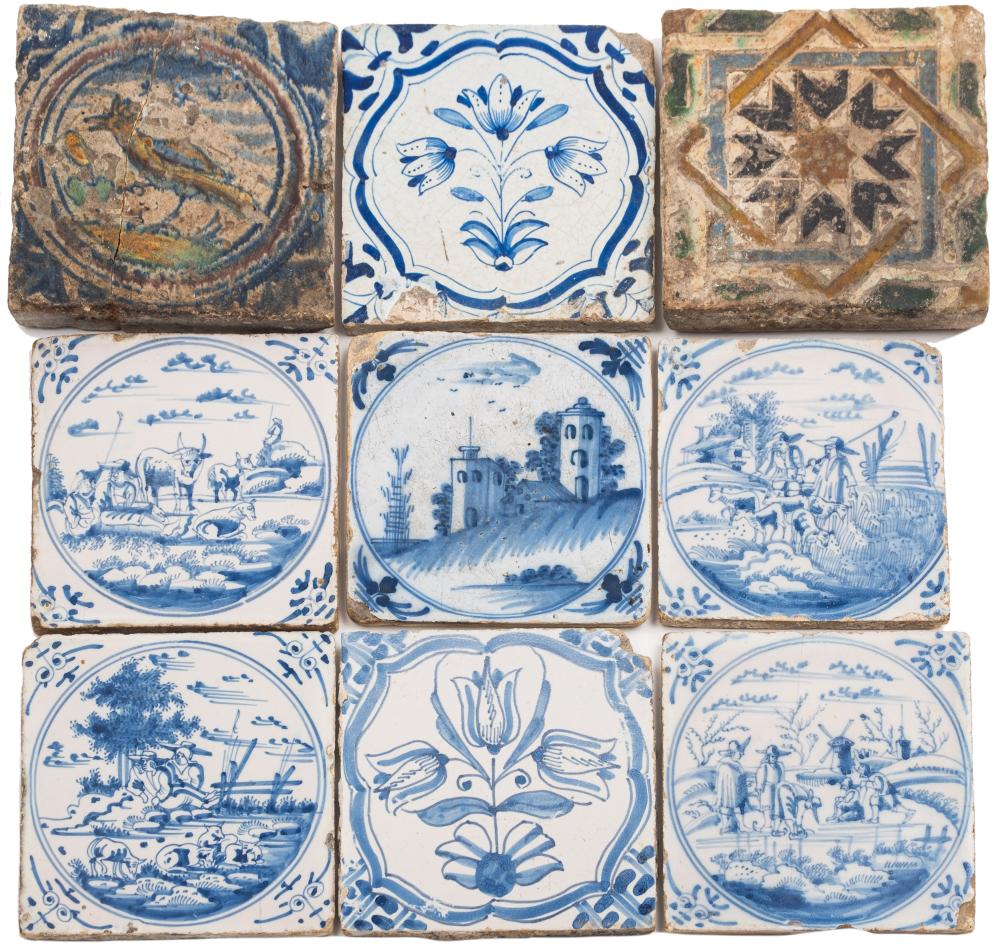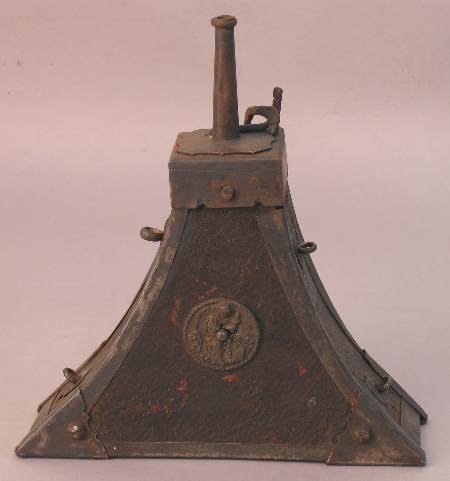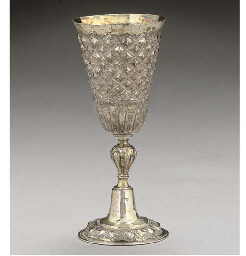An early 17th century German silver-gilt tankard, by Peter Wiber, Nürnberg, circa 1620, circular form, the body with engraved decoration and engraved with three interpretations of prints by Peter Iselberg after Albrecht Dürer (1471-1528), titled 'Festina Lente' (more haste less speed), 'Sic Orbis Iter' (two steps forward one step back), and 'Sic Cedere iuvat', (so give assists), above old German inscriptions, the scroll handle with scroll motifs and a torso, (lacking head), the hinge with some repair, the cover with engraved decoration and with a later cone finial, on a spread circular foot, height 14cm, approx. weight 10.7oz. (335grams). Provenance: A Private Collection. Emblemata Poilitica was published in 1617, with engravings by Peter Iselberg (1580-1630) and with text by George Rem(us). This work would have influenced the decoration on this tankard. Mara R. Wade writes about this in Emblems in Early Modern Nürnberg: 'When the space (The Great Hall, Nürnberg), was renovated again beginning in 1613, a series of thirty-two emblems was painted into the window niches opposite the portrayal of the imperial triumphal chariot, augmenting Pirckheimer and Dürer's existing allegorical program with a new genre, which offered modern expressions of good government and social justice in compact form. The emblematic epigrams were written by the Augsburg patrician Georg Rem (Remus) and soon thereafter, in 1617, they were engraved and published as Emblemata Politica by Peter Iselburg (1580-1630). In the introduction to the printed book, Isselburg writes that he had been so inspired by the political emblems in the Great Hall that he had immediately engraved and published them to make their civic message available to a wider audience . Published in book form, however, the emblems from the Great Hall were divorced from their context. Clearly, Georg Rem understood that this two-dimensional expression diminished his work and deprived it of its rich contextualization within Pirckheimer and Dürer's sophisticated decorative program. The Rem manuscript preserved today at the Newberry Library represents an attempt to rectify this situation by positioning the emblems within the greater rhetorical framework of the decorative program and extending the interpretive framework to include civic monuments in Nürnberg from the previous century. Moreover, the manuscript confirms that Rem saw his emblems in a much wider context than that of the Great Hall. He consciously places his emblems in a century-old tradition of articulating both real and ideal concepts of justice and good government in the relations between the empire and the Free Imperial City of Nürnberg' Reference: Wade, Mara R., Emblems in Early Modern Nürnberg, https://publications.newberry.org/digital/emblemata-politica/history-and-background. Read more »
An early 17th century German silver-gilt tankard, by Peter Wiber, Nürnberg, circa 1620, circular form, the body with engraved decoration and engraved with three interpretations of prints by Peter Iselberg after Albrecht Dürer (1471-1528), titled 'Festina Lente' (more haste less speed), 'Sic Orbis Iter' (two steps forward one step back), and 'Sic Cedere iuvat', (so give assists), above old German inscriptions, the scroll handle with scroll motifs and a torso, (lacking head), the hinge with some repair, the cover with engraved decoration and with a later cone finial, on a spread circular foot, height 14cm, approx. weight 10.7oz. (335grams). Provenance: A Private Collection. Emblemata Poilitica was published in 1617, with engravings by Peter Iselberg (1580-1630) and with text by George Rem(us). This work would have influenced the decoration on this tankard. Mara R. Wade writes about this in Emblems in Early Modern Nürnberg: 'When the space (The Great Hall, Nürnberg), was renovated again beginning in 1613, a series of thirty-two emblems was painted into the window niches opposite the portrayal of the imperial triumphal chariot, augmenting Pirckheimer and Dürer's existing allegorical program with a new genre, which offered modern expressions of good government and social justice in compact form. The emblematic epigrams were written by the Augsburg patrician Georg Rem (Remus) and soon thereafter, in 1617, they were engraved and published as Emblemata Politica by Peter Iselburg (1580-1630). In the introduction to the printed book, Isselburg writes that he had been so inspired by the political emblems in the Great Hall that he had immediately engraved and published them to make their civic message available to a wider audience . Published in book form, however, the emblems from the Great Hall were divorced from their context. Clearly, Georg Rem understood that this two-dimensional expression diminished his work and deprived it of its rich contextualization within Pirckheimer and Dürer's sophisticated decorative program. The Rem manuscript preserved today at the Newberry Library represents an attempt to rectify this situation by positioning the emblems within the greater rhetorical framework of the decorative program and extending the interpretive framework to include civic monuments in Nürnberg from the previous century. Moreover, the manuscript confirms that Rem saw his emblems in a much wider context than that of the Great Hall. He consciously places his emblems in a century-old tradition of articulating both real and ideal concepts of justice and good government in the relations between the empire and the Free Imperial City of Nürnberg' Reference: Wade, Mara R., Emblems in Early Modern Nürnberg, https://publications.newberry.org/digital/emblemata-politica/history-and-background. Read more »





.jpg)









Testen Sie LotSearch und seine Premium-Features 7 Tage - ohne Kosten!
Lassen Sie sich automatisch über neue Objekte in kommenden Auktionen benachrichtigen.
Suchauftrag anlegen